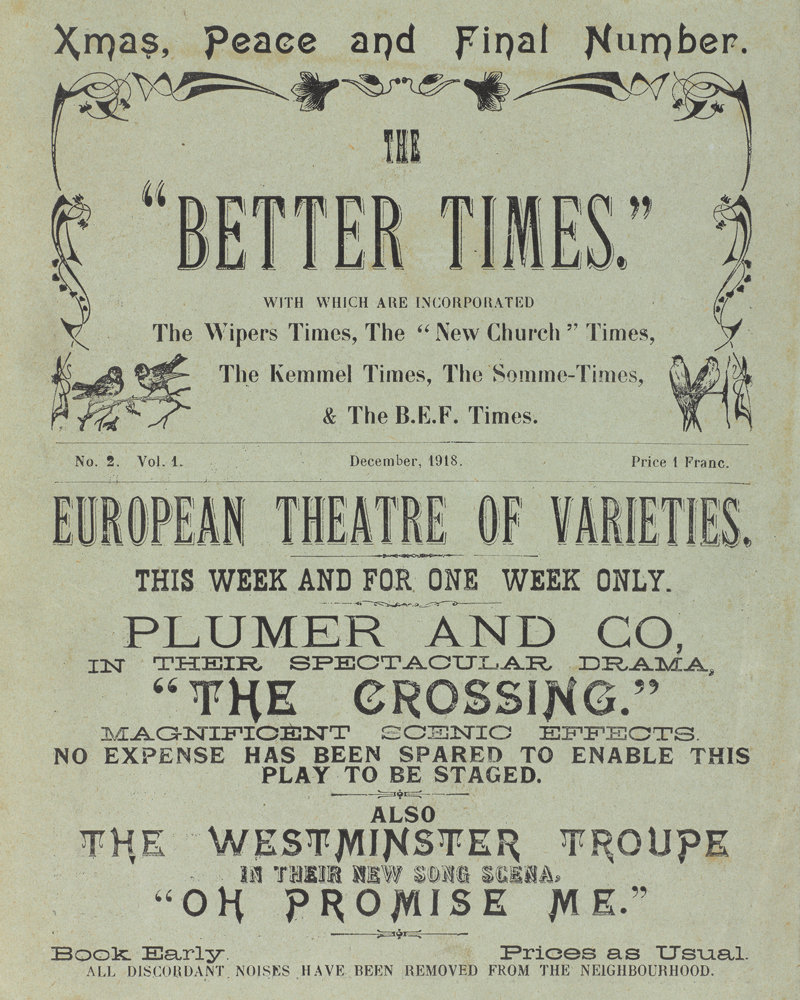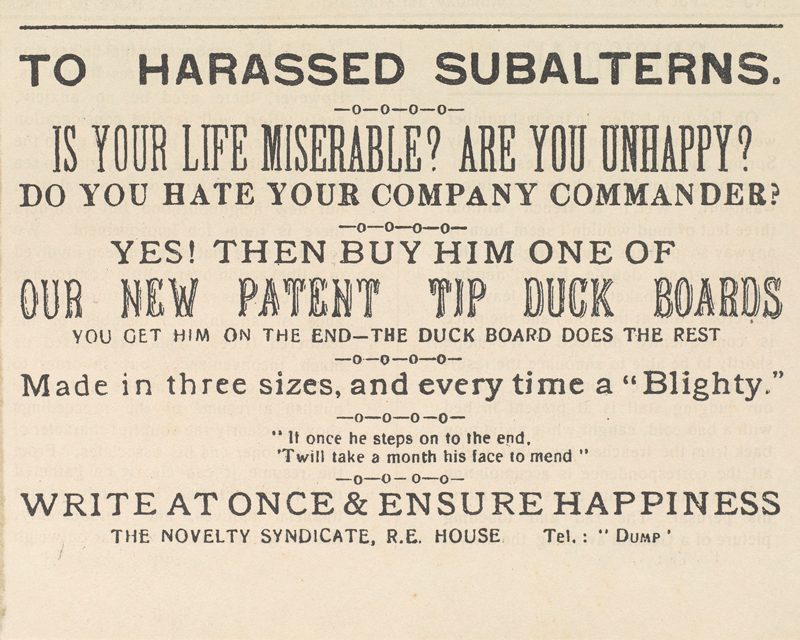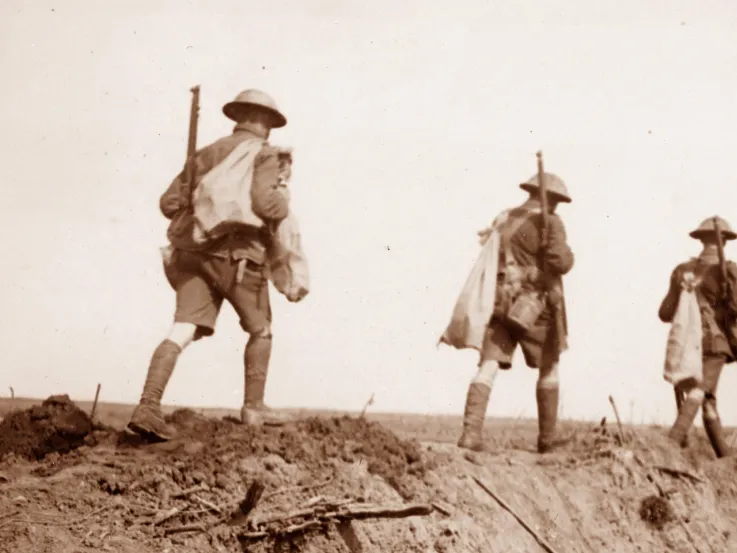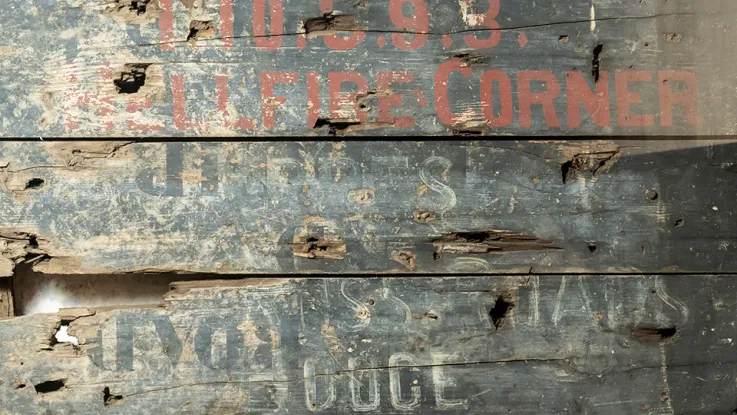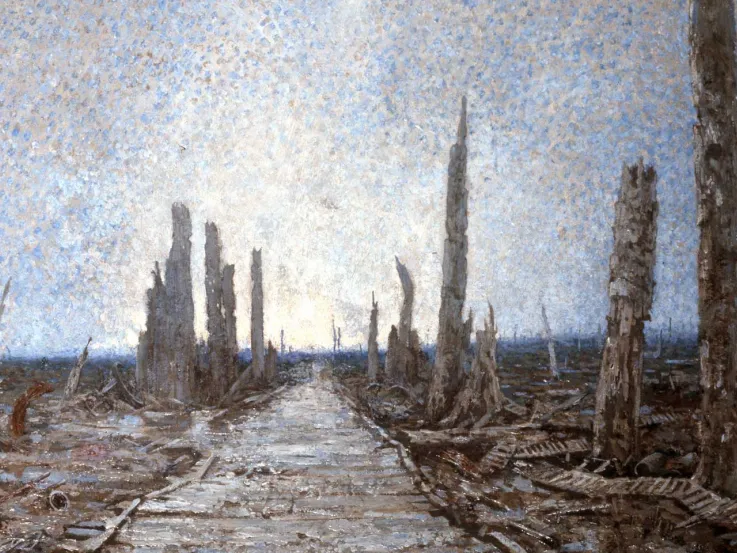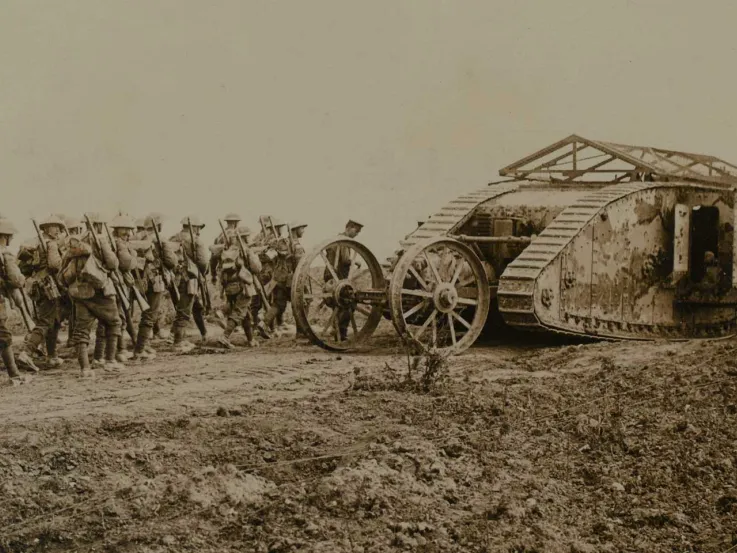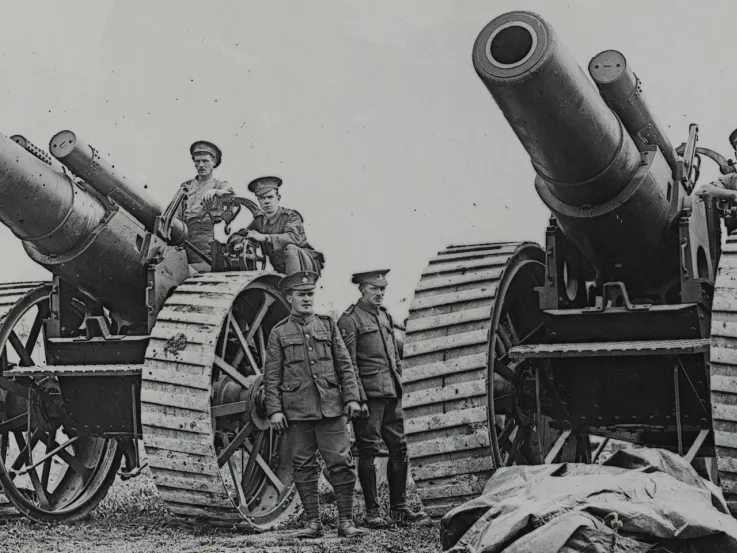‘A printing outfit (slightly soiled)’
'The Wipers Times' was the brainchild of Captain Fred Roberts and Lieutenant Jack Pearson of 12th Battalion, The Sherwood Foresters. They found a damaged but serviceable printing press among the ruins of the heavily shelled city of Ypres (pronounced 'Wipers' by the soldiers). One of the sergeants in their regiment, a printer in civilian life, was able to get it working.
They used it to produce a witty and sophisticated newspaper - a cross between a parish magazine, a school magazine and the illustrated magazines of the day.
‘Having managed to pick up a printing outfit (slightly soiled) at a reasonable price, we have decided to produce a paper. There is much that we would like to say in it, but the shadow of censorship enveloping us causes us to refer to the war, which we hear is taking place in Europe, in a cautious manner.’Editorial in the first edition of 'The Wipers Times' — February 1916
‘No responsibility for the thirst for information’
The first edition of 'The Wipers Times' was printed on 12 February 1916. These 100 copies were rapidly snapped up by Roberts and Pearson's comrades.
Although the print runs were small - limited by the availability and cost of paper - the readership was significant. Each copy would have passed through many hands, with parts read out loud in dug-outs and trenches.
The name of the newspaper changed as the battalion moved around the Western Front. At various stages, it was known as ‘The “New Church” Times’, ‘The Kemmel Times’, ‘The Somme Times’ and then ‘The BEF Times’. At the end of the war, it became ‘The “Better Times”’.
‘Our special correspondent’
'The Wipers Times' was written with wit, but never strayed into smut or vulgarity. The articles often satirised popular poets and authors, such as the mock serial featuring 'Herlock Shomes' or the diary of Lieutenant Samuel Pepys.
The paper was also the perfect place to vent frustration at certain journalists who produced overwrought and self-aggrandising articles from the front. William Beech Thomas of the 'Daily Mail' was a particular target.
Despite the newspaper's prolific use of satire, Roberts claimed they generally had little trouble with censorship. However, it was 'for reasons not unconnected with the censor' that its location-based titles were replaced with 'The BEF Times'.
‘All was still as the first flush of dawn lit the sky. Then suddenly the atmosphere was riven by the crescendo chorus which leapt to meet the light as a bridegroom to his bride. The delicate mauve and claret of the dawning day was displaced by a frothy, and furious fandango of fire... I was picking wallflowers in Glencorse Wood when all this happened, and even now the memory of that zero hour is with me.’'We Attack at Dawn' by Teech Bomas (the fictional) special correspondent for 'The BEF Times' — 15 August 1917
Original copies
'The Wipers Times' was so popular that a collected edition was published in London in 1918 and again in 1930. The National Army Museum holds original copies of the newspaper, as well as both collected editions, which researchers can view in the Templer Study Centre.



